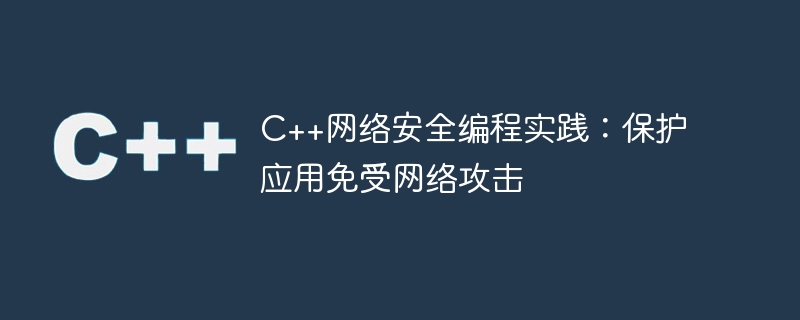

Network security has always been a crucial topic in the computer field, especially for applications involving network communications, security issues cannot be ignored. In C programming, we can protect our applications from cyberattacks through some programming practices. This article introduces some C network security programming practices and discusses how to protect applications from common network attacks.
In C programming, we use sockets to implement network communication. In order to ensure security, we can enhance the security of network communication by setting some socket options. For example, we can set the TCP_NODELAY option to disable the Nagle algorithm to prevent traffic hijacking and DoS attacks. We can also set the SO_REUSEADDR option to allow reuse of socket addresses in the TIME_WAIT state in order to correctly handle a large number of connection requests. Additionally, by setting the SO_KEEPALIVE option, we can maintain connection persistence and prevent denial-of-service attacks on both the client and the server.
The SSL/TLS protocol is a common encryption protocol that can ensure the encryption and secure transmission of data in network communications. We can use encryption libraries like OpenSSL and PolarSSL to implement the SSL/TLS encryption protocol when implementing socket communication. Through the SSL/TLS encryption protocol, we can protect the confidentiality and integrity of data and prevent it from being stolen or tampered with.
Input validation and filtering is an effective firewall mechanism that normalizes and checks input to prevent dangerous input data from causing applications to Crash or be attacked. We can prevent malicious users from entering dangerous data by using input validation and filtering mechanisms such as regular expressions and whitelists to ensure the security of network communications.
Buffer overflow is a common attack method. An attacker can input a large amount of data to cause the program buffer to overflow, and then target program attacks. In order to avoid buffer overflow, we can use safe programming techniques to safely and correctly manage the buffers in the program. For example, use the container class in C STL to perform integrity checks on buffer operations, check the length and capacity of the buffer before writing, etc. In addition, we can also use memory pool technology to avoid frequent memory allocation and release operations and reduce security issues caused by memory leaks and releases.
Exception handling and error handling are also the focus of C network programming. We need to carefully handle and judge abnormal situations to avoid uncaught exceptions in the program, causing network communication interruption or failure. In addition, we also need to handle and record error situations in a timely manner to avoid problems such as error information leakage and program crashes as much as possible.
In summary, C network security programming practices cover many aspects, including socket option settings, SSL/TLS protocols, input validation and filtering, buffer overflow and memory safety, exception handling and errors Processing etc. Only by comprehensively applying these technologies can we ensure the security of C network applications, avoid network attacks, and ensure the stability and reliability of network communications.
The above is the detailed content of C++ Cybersecurity Programming Practice: Protecting Applications from Cyber Attacks. For more information, please follow other related articles on the PHP Chinese website!




